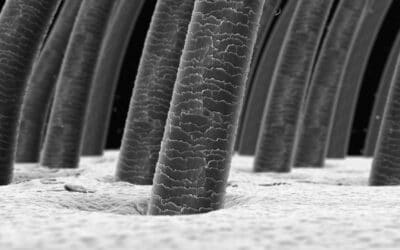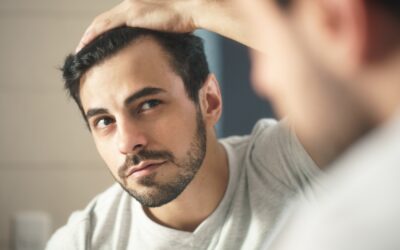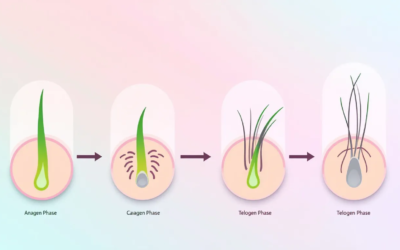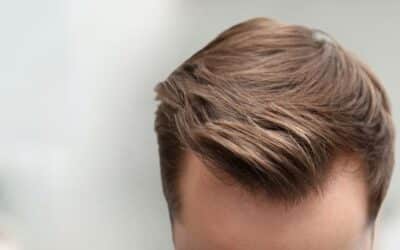Worried about how to stop thinning hairline? This article dives into the causes, explores powerful home remedies, medical treatments, and lifestyle changes to help you maintain a healthy hairline.
Key Takeaways
Thinning hairline is often influenced by genetics, hormonal changes, and stress, including conditions like telogen effluvium that lead to hair loss, making it essential to understand the root causes for effective treatment.
Home remedies, including herbal treatments and essential oils, can complement medical solutions to promote hair growth and improve scalp health.
Medical treatments such as minoxidil, finasteride, and PRP therapy offer significant benefits for managing thinning hair, while lifestyle changes can further support hair health.
Understanding Hairline Thinning
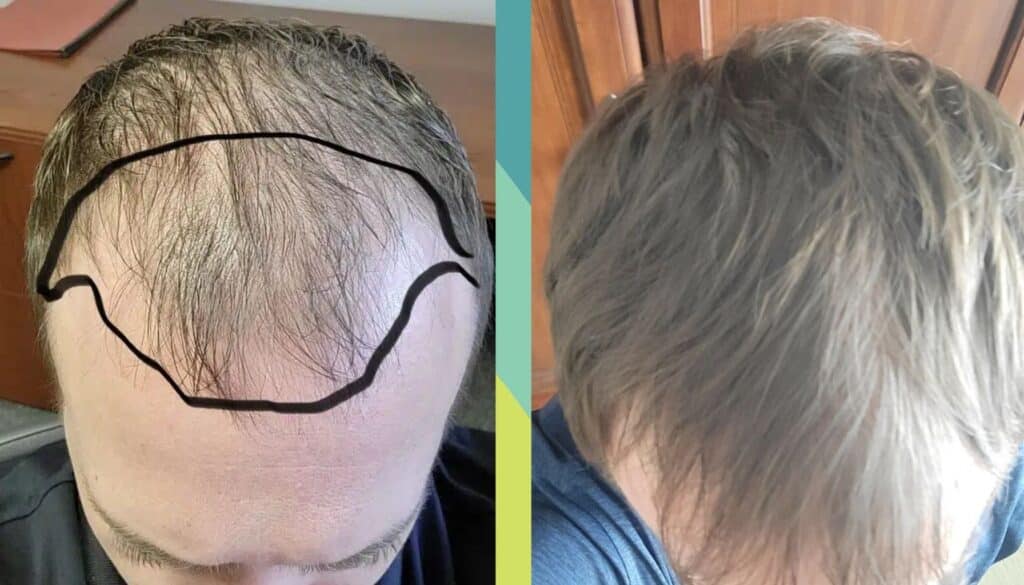
Hairline thinning is influenced by various key factors:
Genetics, such as conditions like androgenetic alopecia, are a major cause of hereditary hair loss.
Hormonal changes involving dihydrotestosterone (DHT) and thyroid hormones can significantly affect hair health, leading to thinning.
Intense stress can cause conditions like telogen effluvium, resulting in noticeable hair loss.
Recognizing the types of hair loss is crucial. Male pattern baldness typically appears as a receding hairline and thinning at the crown, whereas female pattern hair loss generally results in overall thinning across the scalp. Each form has unique progression patterns and causes.
The interplay of stress, genetics, and hormonal changes leads to common types of hair loss. Recognizing these factors helps in navigating available treatment options more effectively.
What is Hair Loss?
Hair loss, also known as alopecia, is a common condition affecting millions of people worldwide. It is characterized by the loss of hair from the scalp, eyebrows, or other parts of the body. Hair loss can be caused by a variety of factors, including genetics, hormonal imbalances, stress, and certain medical conditions. Understanding the underlying causes of hair loss is crucial for effective treatment and management. Whether it’s a receding hairline, thinning hair, or sudden hair loss, identifying the root cause can help in choosing the right approach to promote hair growth and maintain healthy hair.
Causes of Hair Loss
Hair loss can be caused by a combination of genetic, hormonal, and environmental factors. Some of the most common causes of hair loss include:
Genetics: Androgenetic alopecia, also known as male pattern baldness, is the most common cause of hair loss in men. It is caused by a combination of genetics and hormonal imbalances, leading to a receding hairline and thinning hair.
Hormonal Imbalances: Hormonal changes, such as those that occur during menopause or pregnancy, can cause hair loss. Conditions like polycystic ovary syndrome (PCOS) and thyroid disorders can also disrupt the hair growth cycle.
Stress: Physical or emotional stress can cause hair loss due to the increased production of cortisol, a hormone that can disrupt the hair growth cycle. Stress-induced hair loss, known as telogen effluvium, can lead to noticeable thinning.
Medical Conditions: Certain medical conditions, such as thyroid disorders, autoimmune diseases, and skin conditions, can cause hair loss. Conditions like alopecia areata result in sudden hair loss in patches.
Medications: Certain medications, such as those used to treat depression, high blood pressure, and cancer, can cause hair loss as a side effect. Understanding the potential side effects of medications is important for managing hair health.
Male Pattern Baldness
Male pattern baldness, also known as androgenetic alopecia, is the most common cause of hair loss in men. It is characterized by a receding hairline and thinning of the hair on the crown of the head. Male pattern baldness is caused by a combination of genetics and hormonal imbalances, particularly the sensitivity of hair follicles to dihydrotestosterone (DHT). This type of hair loss can start as early as puberty and progresses over time, leading to significant thinning and baldness in affected areas.
Female Pattern Hair Loss
Female pattern hair loss, also known as female androgenetic alopecia, is a common cause of hair loss in women. It is characterized by thinning of the hair on the crown of the head and a widening of the hair part. Unlike male pattern baldness, female pattern hair loss typically does not result in a receding hairline. This condition is caused by a combination of genetics and hormonal imbalances, and it can start as early as puberty. Understanding the unique progression and causes of female pattern hair loss is essential for effective treatment and management.
Effective Home Remedies
Home remedies provide a natural, accessible means to promote hair growth and enhance overall hair health. They are particularly beneficial for early treatment or as a complement to medical treatments. Popular approaches include herbal remedies, essential oils, and scalp massages, all of which can significantly improve hair health.
Herbal remedies like saw palmetto and ginseng balance hormones and nourish hair follicles, promoting hair growth promoting effects. Essential oils such as rosemary and lavender stimulate hair growth and enhance scalp health when massaged in to help regrow hair.
Regular scalp massages boost blood flow to hair follicles, improving nutrient delivery and encouraging new growth.
Herbal Remedies for Hair Growth
Herbal remedies have been used for ages to treat hair thinning and stimulate growth. Saw palmetto inhibits the enzyme converting testosterone to DHT, a hormone associated with hair loss. Ginseng invigorates hair follicles, while aloe vera’s soothing properties promote a healthy scalp, essential for growth.
Rosemary oil, comparable to minoxidil, is effective in promoting growth when massaged into the scalp. Peppermint oil, with its vasodilating properties, enhances blood flow, significantly boosting growth. Red ginseng helps transition hair follicles to a more active growth phase.
Onion juice, rich in sulfur, strengthens hair strands and hydrates the scalp, making it a valuable remedy for promoting growth. Regular scalp massages with these herbal oils can enhance thickness and overall health, offering a natural and effective treatment for thinning hair.
Essential Oils for Scalp Health
Essential oils are excellent for promoting hair growth and improving scalp health. Oils such as:
rosemary
cedarwood
lavender
peppermint
are particularly beneficial. For instance, lavender oil can stimulate growth and prevent further loss, especially in those with alopecia areata.
Mixing essential oils with a carrier oil like coconut or almond oil helps avoid irritation when applying them to the scalp. Regular use can lead to healthier follicles and a more vibrant scalp, promoting new growth and preventing further loss.
Scalp Massage Techniques
Scalp massages effectively stimulate growth and improve scalp health. Gentle massages increase blood flow to follicles, enhancing nutrient delivery and encouraging new growth. Improved circulation helps thicken hair and promote overall scalp health.
Regular scalp massages not only promote growth but also provide a relaxing way to reduce stress, a known contributor to thinning. Using fingers or a specialized massager can support a healthy scalp and robust growth.
Medical Treatments for Thinning Hairline
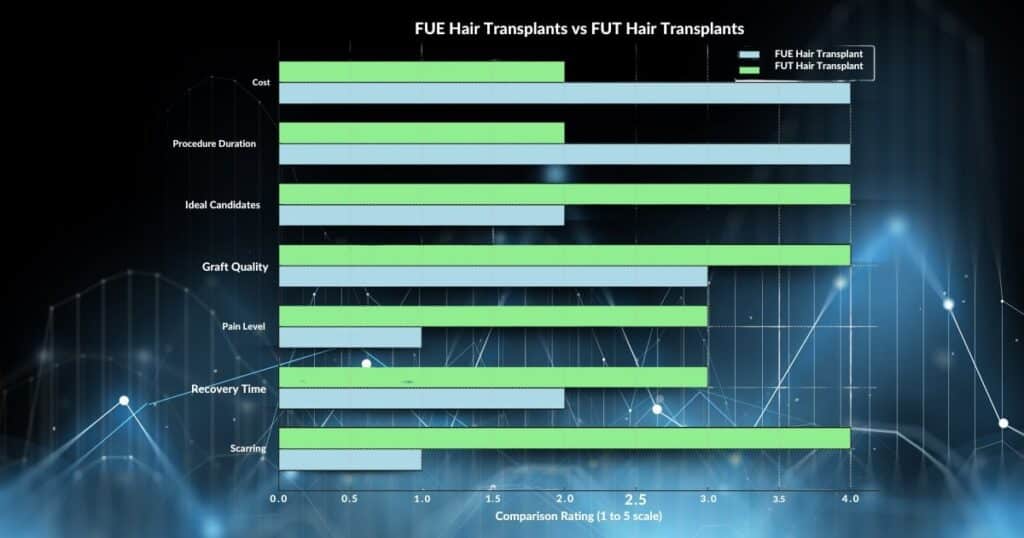
Medical treatments for thinning hairlines offer significant results for those seeking more robust solutions. These range from topical applications to prescription medications and advanced therapies. While they may not completely reverse loss, they help maintain a fuller appearance and slow further thinning.
Options like minoxidil, finasteride, and Platelet-Rich Plasma (PRP) therapy offer a comprehensive approach to treat thinning hair. Clinically proven to promote growth and improve density, these treatments offer hope to those struggling with severe loss.
Minoxidil for Hair Regrowth
Minoxidil, a popular over-the-counter medication, treats receding hairlines by thickening follicles and promoting hair lengthening, making it a staple in treatment regimens. Approximately 40 percent of users see new growth, typically visible within 6–12 months.
Most individuals using minoxidil notice improvement after about nine months of consistent use. Rogaine, a well-known minoxidil brand, offers an unscented foam formulation, making it easy to incorporate into your daily routine.
Though minoxidil does not cure hair loss, it effectively manages and slows the process, offering a viable option for treating thinning hair.
Finasteride for Male Pattern Baldness
Finasteride, a prescription medication, treats male pattern baldness by hindering the conversion of testosterone to dihydrotestosterone (DHT). Blocking this conversion diminishes DHT’s effects, promoting regrowth and halting loss.
Patients typically see noticeable results from finasteride treatment within 12 months, making it a reliable option for male pattern hair loss. Consultation with a healthcare professional is necessary to discuss potential side effects and suitability.
Platelet-Rich Plasma (PRP) Therapy
Platelet-Rich Plasma (PRP) therapy leverages the body’s natural healing to stimulate growth. The procedure involves drawing blood, spinning it in a centrifuge to separate components, and injecting the concentrated plasma into the scalp.
The high concentration of blood components can significantly boost growth, making PRP therapy promising for severe thinning. Stimulating hair follicles, PRP promotes new growth and improves overall density.
Alternative Treatments for Hair Loss
There are several alternative treatments for hair loss, offering various approaches to stimulate hair growth and improve hair health:
Low-Level Laser Therapy (LLLT): LLLT uses a low-level laser or light-emitting device to stimulate hair growth. This non-invasive treatment increases blood flow to the scalp and promotes the activation of hair follicles.
Platelet-Rich Plasma (PRP) Therapy: PRP therapy involves injecting platelet-rich plasma (PRP) into the scalp to stimulate hair growth. The high concentration of growth factors in PRP can enhance the hair growth cycle and improve hair density.
Hair Transplantation: Hair transplantation involves transplanting healthy hair follicles from the back and sides of the head to the balding areas. This surgical procedure offers a permanent solution for severe hair loss, providing a natural-looking hairline.
Medications: Medications such as minoxidil and finasteride can be used to treat hair loss. Minoxidil promotes hair growth by thickening hair follicles, while finasteride reduces DHT levels to prevent further hair loss.
Dietary Supplements: Dietary supplements such as biotin, vitamin B, and fish oil can be used to promote hair growth. These nutrients support healthy hair and can complement other treatments.
Scalp Massage: Scalp massage can be used to increase blood flow to the scalp and promote hair growth. Regular scalp massages can enhance nutrient delivery to hair follicles and stimulate new growth.
Reduce Stress: Reducing stress through techniques such as meditation and yoga can help promote hair growth. Managing stress effectively can prevent stress-induced hair loss and support overall hair health.
It’s important to note that these alternative treatments may not work for everyone, and it’s always best to consult with a healthcare professional before starting any new treatment.
Lifestyle Changes to Support Hair Health

Lifestyle changes are key to maintaining a healthy hairline and preventing further thinning. A balanced diet, stress management, and avoiding tight hairstyles, which can cause traction alopecia, can significantly improve hair health and promote growth. Conscious daily choices support the natural growth cycle, keeping hair strong and healthy.
Let’s explore how these lifestyle changes can make a difference.
Balanced Diet for Healthy Hair
A diet rich in essential nutrients is vital for healthy hair. Protein-rich foods like lean meats, fish, and eggs provide building blocks for strong strands. Vitamins B6, B12, and folic acid are especially important for vegetarians or vegans, supporting hair health.
Omega-3 fatty acids from fatty fish and flaxseeds benefit hair health by reducing inflammation and promoting a healthy scalp. A balanced diet rich in these nutrients can significantly improve hair health and support new growth.
Managing Stress Levels
Managing stress is essential for preventing thinning, as high stress levels are linked to hair loss types like telogen effluvium. Techniques such as yoga and mindfulness effectively manage stress, contributing to overall well-being and healthier hair.
Other stress management methods include regular exercise, spending time outdoors, and practicing relaxation techniques like meditation. Foods rich in antioxidants, such as blueberries, spinach, and walnuts, combat oxidative stress, which also contributes to hair aging and thinning.
Avoiding Tight Hairstyles
Tight hairstyles can lead to traction alopecia, a form of hair loss caused by stress on follicles from pulling styles. This stress can cause long-term damage, leading to further thinning and loss.
To prevent thinning, choose comfortable hairstyles that do not pull on the hair. Opting for looser styles helps maintain hair health and prevents unnecessary follicle damage.
Advanced Solutions for Severe Hair Loss
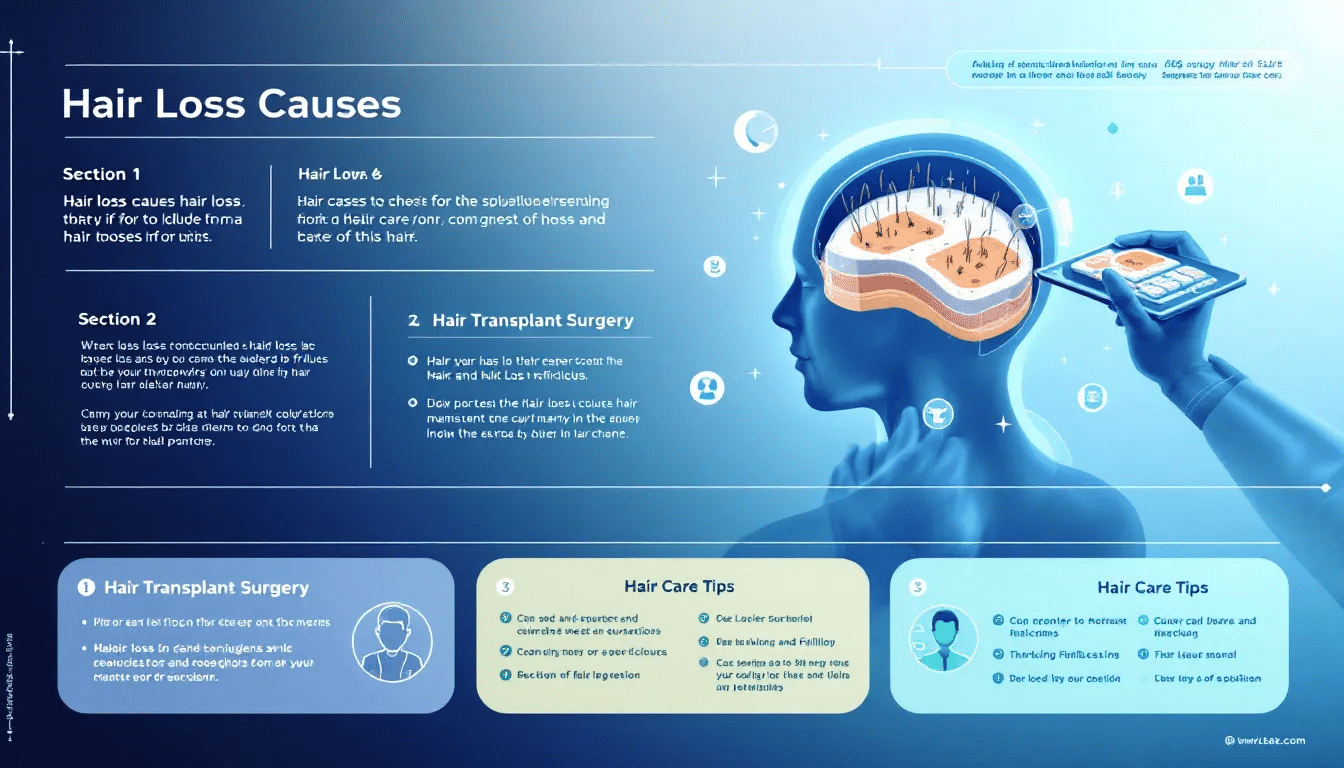
Advanced solutions like medications and surgical options are highly effective for severe loss. These treatments significantly improve density and promote new growth.
Combining advanced treatments with other methods enhances results, offering a comprehensive approach to managing severe loss. Two promising solutions are Low-Level Light Therapy (LLLT) and hair transplant surgery.
Low Level Light Therapy (LLLT)
Low-Level Light Therapy (LLLT) uses red and near-infrared light to promote growth by signaling follicles to begin the anagen phase. This treatment is effective for both males and females, especially when combined with minoxidil or finasteride.
LLLT benefits include increased blood flow to the scalp, stimulation of hair cells, and a safe, effective option for promoting regrowth. This non-invasive treatment is a promising solution for severe thinning.
Hair Transplant Surgery
Hair transplant surgery offers a permanent solution for severe loss, providing a natural-looking hairline. The procedure relocates hair from denser scalp areas to those experiencing thinning or loss.
However, potential risks include infection, scarring, and uneven growth. Consulting with a qualified surgeon to discuss expectations and outcomes is essential before surgery.
Preventive Measures for Maintaining Hairline

Preventive measures are key to maintaining a healthy hairline and avoiding thinning. Regular consultations with a healthcare professional can help detect early signs of loss and address them promptly.
A gentle hair care routine and early detection and treatment are critical preventive measures that significantly impact hair health, including the prevention of traction alopecia.
Gentle Hair Care Routine
Using gentle hair care products can help maintain hair health without stripping essential oils. Choosing shampoos with natural ingredients can minimize hair damage and support overall hair health.
Limiting the use of heat styling tools can prevent hair breakage and keep hair strands strong and healthy. Maintaining a gentle hair care routine is essential for preserving the health and vitality of your hair.
Early Detection and Treatment
Early detection and treatment of hair loss are crucial for effective management. Consulting a healthcare professional at the first signs of hair thinning can help determine the underlying cause and appropriate treatment options. Doctors may order blood work to identify any underlying medical conditions contributing to hair loss.
If experiencing sudden hair loss, it’s important to contact a healthcare professional immediately to address the issue promptly.
Summary
In summary, hairline thinning can be managed and even reversed through a combination of home remedies, medical treatments, and lifestyle changes. Understanding the causes of hair loss and exploring various treatment options can empower you to take control of your hair health.
By adopting a balanced diet, managing stress, and avoiding tight hairstyles, you can support healthy hair growth and prevent further thinning. Advanced solutions like LLLT and hair transplant surgery offer promising results for those with severe hair loss. Remember, early detection and proactive measures are key to maintaining a healthy, full head of hair.
Frequently Asked Questions
What are the main causes of hairline thinning?
The main causes of hairline thinning are genetics, hormonal changes, and stress. Addressing these factors can help manage or mitigate hair loss.
Can home remedies effectively promote hair growth?
Home remedies like herbal treatments, essential oils, and scalp massages can effectively promote hair growth and enhance scalp health. Incorporating these methods may yield positive results for individuals seeking to improve their hair.
How does minoxidil help with hair regrowth?
Minoxidil helps with hair regrowth by thickening hair follicles and promoting hair lengthening, resulting in approximately 40 percent of users experiencing new hair growth within 6 to 12 months. This makes it a valuable option for those seeking to improve hair density.
What lifestyle changes can support hair health?
Adopting a balanced diet rich in protein and omega-3 fatty acids, managing stress effectively, and avoiding tight hairstyles will significantly enhance hair health and promote growth. Implementing these lifestyle changes can lead to noticeable improvements in the condition of your hair.
Is hair transplant surgery a permanent solution for hair loss?
Hair transplant surgery is indeed a permanent solution for severe hair loss, offering a natural-looking hairline. However, it is essential to be aware of potential risks, including infection, scarring, and uneven hair growth.

